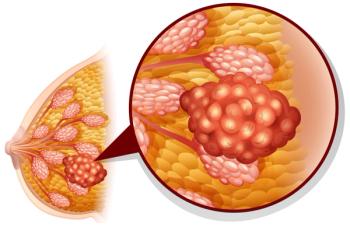
Evidence Links Increasing Number of Cancers to Excess Body Fat
The International Agency for Research on Cancer Working Group recently released an updated evaluation of evidence connecting body fatness and cancer.
The International Agency for Research on Cancer Working Group recently released an updated evaluation of evidence connecting body fatness and cancer.
The group’s 2002 evaluation concluded that there was enough evidence in the literature for a cancer-preventive effect of avoidance of weight gain for cancers of the colon, esophagus, kidney, breast, and corpus uteri.
This updated evaluation,
For the special report, members of the Working Group looked at more than 1,000 epidemiologic studies, most of which were observational, looking at cancer risk and excess body fatness. According to the group, clinical trials of “weight-loss or weight control interventions were sparse.”
“Consequently, the evaluations were based on increased risks associated with excess body fatness rather than reduced risks associated with preventive interventions,” they wrote.
Evaluating updated evidence the group found positive dose-response relationships between body mass index (BMI) and cancer risk for cancers of the colon, rectum, gastric cardia, liver, gallbladder, pancreas, and kidney. Calculated relative risks ranged from 1.2 to 1.5 for overweight people and 1.5 to 1.8 for obese people. The relative risk for esophageal adenocarcinoma associated with a BMI of 40 or greater was 4.8.
Evidence also showed a positive relationship between adult BMI and breast cancer, with a higher risk among women with estrogen receptor–positive disease. However, one of the greatest risks identified was for endometrial cancer, particularly in those women with type 1 endometrial cancers. The relative risk for endometrial cancer was 1.5 for overweight women, 2.5 for class 1 obesity, 4.5 for class 2 obesity, and 7.1 for class 3 obesity.
Finally, available data evaluating BMI in patients with multiple myeloma showed relative risks that were ranging from about 1.2 for overweight individuals to 1.5 for class 2 or 3 obesity.
“We reviewed studies of eight other cancers for which the evidence for an association was considered inadequate, owing to limited data, inconsistent results, or no data suggesting an association: cancers of the lung, esophagus (squamous-cell carcinoma), gastric noncardia, extrahepatic biliary tract, skin (cutaneous melanoma), testis, urinary bladder, and brain or spinal cord (glioma),” the researchers wrote.
In addition, the Working Group looked at data evaluating BMI in childhood or adolescence to see if early overweight affected cancer risk in adult life. They found positive association for several cancers associated with increased adult BMI, with the exception of postmenopausal breast cancer.
Newsletter
Stay up to date on recent advances in the multidisciplinary approach to cancer.




